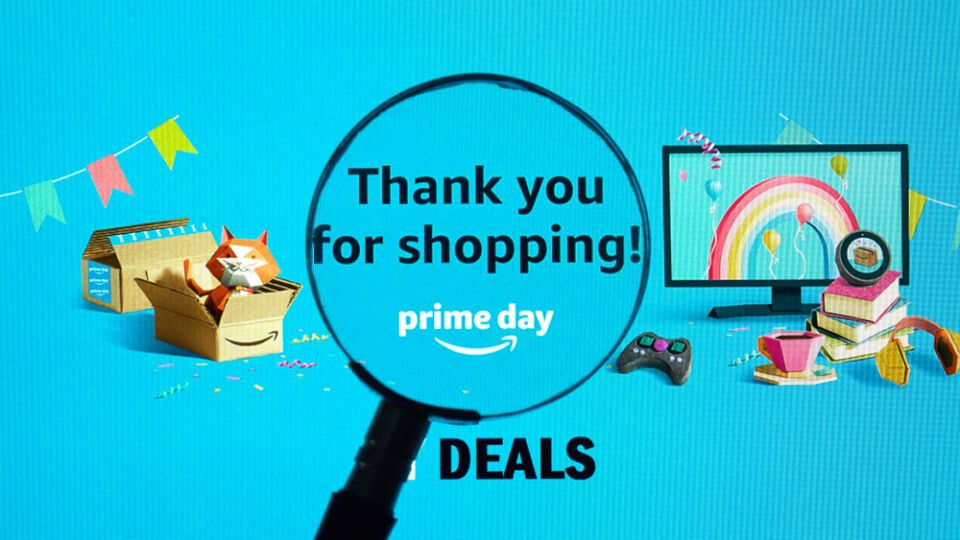Most Prime Day post-mortems look at metrics such as sales growth across categories and year-over-year changes — and with good reason — but Amazon’s shopping holiday has become influential enough that retailers can benefit from a more multifaceted analysis. The sheer scope of the event makes it ideal for a deep dive into what is or isn’t working in ecommerce as a whole, which can help retailers both better compete with the juggernaut and improve their overall operations.
Several of the most prominent opportunities for retailers looking to go above and beyond in their dissection of Prime Day performances include:
- Digging deeper into the data: Looking at stats other than revenue or ad spend can offer retailers a chance to perfect related efforts such as hardening supply chains or improving fulfillment capabilities;
- Shaping competing events: Major players like Walmart and Target launched their own Prime Day initiatives, but even retailers without their clout can benefit from offering their own alternatives; and
- Looking to the holidays and beyond: Prime Day can help retailers get an early idea of what consumer spending will be like during the back-to-school and holiday seasons, and it can also set the stage for the creation of new shopping holidays.
Prime Day Performance Yields Valuable Data — and not Just for Amazon
Sales statistics may grab headlines, but smart retailers are looking under the hood of Prime Day to go beyond the obvious metrics. Amazon itself obviously has access to an incredible array of data, but other retailers can inform their own efforts by applying these analyses to their own Prime Day performances wherever possible.
“Prime Day provides a cornucopia of data for Amazon,” said Chris Ventry, VP in the Consumer and Retail practice of SSA & Company in an interview with Retail TouchPoints. “Highlights include customer navigation through search, brands of the moment and items desired. It is not simply measured through conversion, but also through navigation. For example, [shoppers] not adding a searched-for product can provide Amazon with data on price points, promotion testing, substitution potential, upsell — and more likely ‘down-sell’ — to potentially higher-margin Amazon private branded products.”
Advertisement
Retailers also can use Prime Day as a way to stress test their website speeds, fulfillment capabilities and other ecommerce peak-traffic-related challenges. Even brick-and-mortar-focused retailers can benefit from the data Prime Day offers, according to Hilding Anderson, Head of Strategy, Retail, North America at Publicis Sapient. The high volume of online orders will quickly make any flaws in store-based fulfillment services stand out, and well-prepared retailers can use this opportunity to quickly react and fix any problems, as well as launch tests of optimal picking procedures.
Retailers Should Consider Their Own Sales Events
Directly competing with Prime Day can seem like a losing proposition for retailers that lack the scale of a Target or Walmart. This feeling isn’t unfounded — overall ecommerce sales were flat this year compared to Prime Day 2020 — but grabbing revenue from Amazon shouldn’t be retailers’ only, or even primary, goal during the shopping holiday.
“You have a choice: you can either choose not to do significant sales during this period, or you can choose to have some significant sales during this period,” said Anderson in an interview with Retail TouchPoints. “If you choose not to do it, shoppers are going to go and spend their money with Amazon. If you choose to match, sure you might see lower revenues or a little bit lower profit, but at least you’re maintaining share and not just giving it over to Amazon.”
Retailers can do more than simply hold their ground. With so many shoppers that already have browsing on their mind, making them more receptive to compelling deals and interesting new items, Prime Day also is a great time to grow by introducing new product lines. .
Private label items in particular can stand out during Prime Day. Target has been pushing its own in-house brands, and other retailers can benefit from a similar approach. While it’s hard to beat Amazon’s prices on name-brand items, unique offerings with a strong value proposition can stand out from the crowd.
“Similar to Amazon featuring its own products, other retailers can do the same by highlighting their in-house or differentiated product offerings, which will draw consumers to their site or store over the other options,” said Katie Thomas, Lead at the Kearney Consumer Institute in an interview with Retail TouchPoints. “One of the biggest challenges with Amazon’s sale for name brands is that it can be a race to the bottom – with all retailers being forced to heavily discount the same products to win the sale, and sometimes subsidizing volume that consumers may have purchased in any case.”
Prime Day Can Set Expectations for Holidays — and Prepare Customers For New Ones
Examining Prime Day’s traffic as a barometer for ecommerce in relation to the holiday season is a time-tested strategy, but the 2021 event’s timing and circumstances made it different than usual. “Last year, [when Prime Day was held in October], just over 65% of orders were actually gifts for someone else, which made sense given its timing,” said Anderson. “I think this year it’s becoming much closer to Singles Day in China, where it’s more about you or your partner ordering products for yourselves.”
However, there are other ways Prime Day can help retailers prepare for the second half of the year beyond simply setting expectations. SSA & Company’s Ventry noted that the timing of Prime Day 2021 made it a golden opportunity to move unsold inventory in order to make space for new product launches for both the back-to-school and holiday periods, and future events with similar timing will offer the same opportunity.
Retailers also should look beyond Prime Day as an oracle for existing holidays and consider it an opportunity to build their own major shopping holidays elsewhere in the year. Amazon’s effort has made new shopping holidays exciting for your average shopper, and even smaller retailers can partner together to create new events across the calendar when they aren’t competing with the biggest names in the business.
“Multiple retailers’ jumping on the Prime Day bandwagon helps accustom U.S. consumers to shopping holidays, which benefit retailers and consumers,” said John Harmon, Senior Analyst, Coresight Research in an interview with Retail TouchPoints. “China, for example, has a large number of shopping holidays in addition to Singles’ Day (11.11), and these holidays add excitement to shopping and provide opportunities for retailers to increase sales.”









